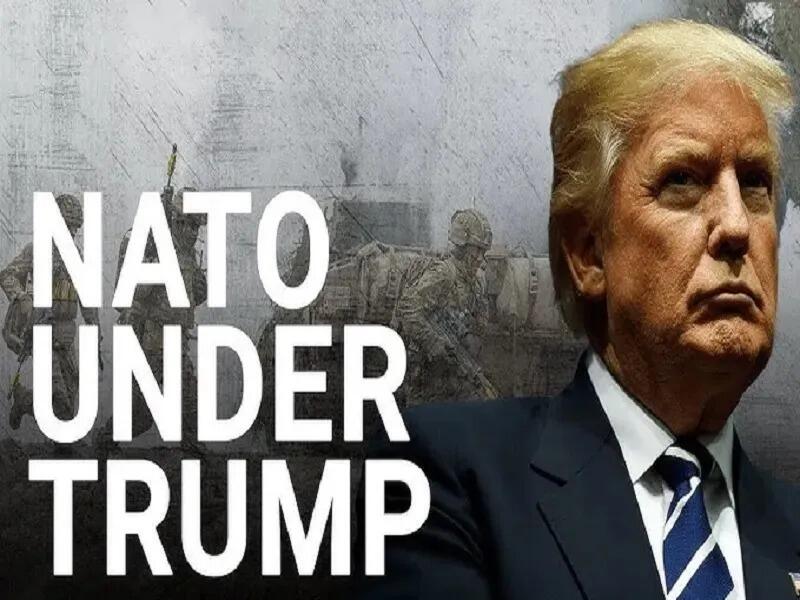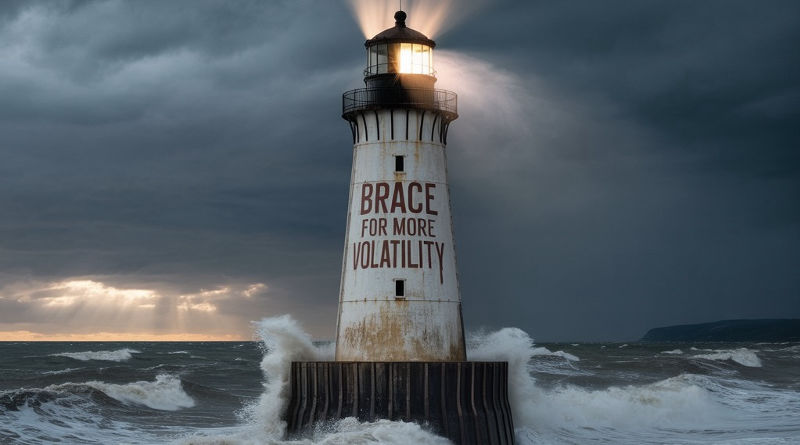Trump's Reported Plan For NATO Is Already Being Partially Implemented
Authored by Andrew Korybko via substack,
Politico published a piece on Tuesday about how “Trump’s Plan for NATO Is Emerging”, which cites some on-the-record and unnamed sources to describe his approach towards the bloc if he’s re-elected. It’s based upon a policy brief that was written by Dr. Sumantra Maitra in February 2023 for the Trump-affiliated Center for Renewing America. Titled “Pivoting the US Away from Europe to a Dormant NATO”, it details how the US can get the EU to defend Europe while the US focuses on containing China in Asia.
The gist is that the US would pull funding from non-essential NATO activities that have nothing to do with defending the bloc from a Russian attack, which Maitra believes isn’t realistic anyhow owing to a lack of will and capability, thus enabling it to return to its core mission and reduce bureaucratic bloat. Everyone would be pressured to ramp up military spending in order to remain under the US’ nuclear umbrella, but sub-bloc coalitions would take responsibility for defending the eastern flank, not the US.
Maitra’s proposal is aimed at ending the era of European freeloading by abruptly shifting the burden for continental defense onto their shoulders, with the US then transforming into an “offshore balancer” vis-à-vis Eurasia (mostly with respect to China and Russia) and “a logistics provider of last resort” for the EU. As part of this transition, the EU would develop cross-border defense industries instead of retaining its purely national ones so as to improve interoperability, thus facilitating the US’ aforesaid logistics role.
As regards Politico’s piece, which builds upon Maitra’s policy brief in the ways that were just explained, Trump 2.0 would also reportedly halt NATO expansion while entertaining the idea of freezing the NATO-Russian proxy war along the Line of Contact. In principle, this approach would meet some of Russia’s security guarantee requests, thus possibly creating grounds for a pragmatic compromise. Suffice to say, Ukraine wouldn’t be allowed to join NATO, though it would still maintain military ties with the West.
Although the Biden Administration is controlled by liberal-globalists who believe that the US should continue letting the EU freeload off of it as a reward for their ideological alignment, military-strategic imperatives vis-a-vis China have already prompted the Pentagon to partially implement Trump’s plan. This has taken the form of promoting the rapid resumption of Germany’s military leadership in the EU via the “Fortress Europe” project, which the two preceding hyperlinked analyses describe at length.
In brief, the idea is for the US to rely on a German-led sub-bloc for containing Russia in Europe at the US’ behest as the US “Pivots (back) to Asia” to contain China, which would be facilitated by its “friendly rival” Poland’s comprehensive subordination as Berlin’s “junior partner”. Like Germany, Poland also wants to build the EU’s largest land force, and these two’s efforts can complement one another if they’re coordinated by the US through the aforementioned hierarchy.
The “military Schengen” that those two and the Netherlands agreed to in February, which was recently joined by France, could soon foreseeably expand to include the Baltic States and thus accelerate the construction of the planned “EU defense line” along the bloc’s eastern borders. These processes are already unfolding despite the Biden Administration’s ideological agenda precisely because the Pentagon realized that this is the most optimal way to maintain America’s military leadership in the New Cold War.
The US can’t remain mired in a European “forever war”, which is what the NATO-Russian proxy war in Ukraine could become if Moscow doesn’t achieve a military breakthrough brought about by its lead in the “race of logistics”/ “war of attrition”, otherwise China’s rise would become uncontrollable. This explains why anti-Russian hawk Kaja Kallas said last month that Ukraine can achieve “victory” even without reconquering its lost regions while Biden said around the same time that it might not join NATO.
These are major concessions that scale back the West’s hitherto maximalist goals in that conflict, though they also coincided with more escalations such as openly letting Ukraine hit any targets inside of Russia, dispatching additional air defenses to Ukraine, and considering officially contracting PMCs there, et al.
This contradiction is accounted for by the struggle between the US’ ruling liberal-globalist faction and their comparatively less radical rivals who want to “Pivot (back) to Asia” as soon as possible.
The first wants a “forever war” in Europe for ideological reasons so as to unite the West around the US’ “moral leadership” since it frames the New Cold War as a battle between “democracies and autocracies”, while the second has more realists within their ranks who see everything geopolitically. Accordingly, the liberal-globalists prioritize containing Russia, while their rivals prioritize containing China. The growing friction between them at this crucial moment in the New Cold War is responsible for these mixed signals.
Nevertheless, while the outcome of their struggle remains unclear since a lot will depend on the US’ presidential election, the fact of the matter is that the Biden Administration has still presided over the partial implementation of Trump’s plan as was already explained. Supplementary evidence of this includes the EU’s first-ever “Defense Industry Strategy”, which Politico summarized here, thus showing that Maitra’s cross-border industrial proposal is being advanced in parallel with the sub-bloc one.
These military, political, and diplomatic developments are aimed at optimizing the US’ power projection given its limited industrial capabilities at present, newfound intense competition from the Sino-Russo Entente, and the latest strategic dynamics of the Ukrainian Conflict. These factors converged over the past year to push the Pentagon into independently promulgating some of the policies that Maitra suggested even if its policymakers might have been completely unaware of his suggestions.
If the liberal-globalists’ Democrat proxies remain in the White House, then Maitra’s vision will likely remain only partially implemented since it’s unlikely that the US would end the era of European freeloading due to that ruling clique’s ideological interests. If Trump returns, however, then everyone should expect that his plans will be more comprehensively implemented even if they might still ultimately fall somewhat short of their maximalist goals for presently unforeseeable reasons.
More geopolitical stories on ZeroHedge

Putin Orders Army To Establish Big Border Buffer Zone Inside Ukraine

UK Welcomes South African Activist Who Chants About Killing White Farmers

Jihadists Launch Deadly Attack On Russian Airbase On Syria's Coast
NEVER MISS THE NEWS THAT MATTERS MOST
ZEROHEDGE DIRECTLY TO YOUR INBOX
Receive a daily recap featuring a curated list of must-read stories.



 Latest: Epstein Deep Dive
Latest: Epstein Deep Dive


